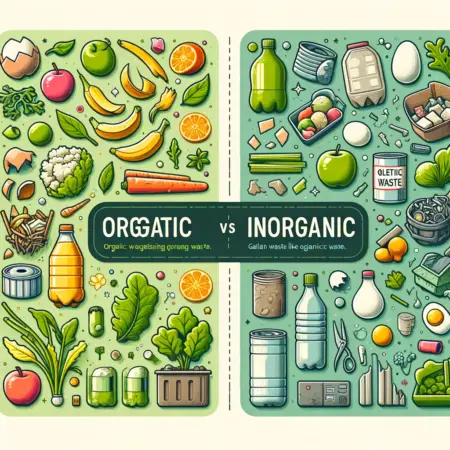The term garbage refers to all the waste or rubbish that humans produce . In other words, these are products, materials or foods that are discarded because they have lost their usefulness or because they have already been used or have no utility.
It should be borne in mind that a lot of garbage can be recycled , that is, subject it to certain processes in order to produce new elements. In this way, a great contribution is made to the environment, since pollution is reduced and the use of natural resources is limited, which is often limited.
Within the garbage two groups can be identified, which are the following:Examples of organic and inorganic waste

- Inorganic garbage : It is that whichdoes not derive directly from a living being, but is the waste that is produced from materials or objects that had been produced by humans.
- Organic garbage : In opposition to the previous case, this garbage does come from some living being or living organism , whose nature has not undergone any transformation.
Examples of organic and inorganic waste
- Paper (organic waste)
- Containers made with PVC (Inorganic garbage)
- Wood chips (organic garbage)
- Nylon bags (Inorganic garbage)
- Batteries (inorganic garbage)
- Banana peel (organic waste)
- Batteries (inorganic garbage)
- Shoe sole (Inorganic garbage)
- Chicken bones (organic waste)
- Leftover noodles (organic garbage)
- Dried leaves (organic garbage)
- Damaged keyboard (inorganic garbage)
- Rotten fruits (organic garbage)
- Pair of torn stockings (Inorganic garbage)
- Hair (organic garbage)
- Yerba de mate (organic garbage)
- Broken Slate (Inorganic Trash)
- Expanded polystyrene (Inorganic garbage)
- Ashes from a campfire (organic garbage)
- Music cassette (Inorganic garbage)
- Dry plant (organic garbage)
- Plastic Toys (Inorganic Garbage)
- Old TV (Inorganic Garbage)
- Branches of an old tree (organic garbage)
- Orange seeds (organic garbage)
- Aluminum cans (inorganic garbage)
- Cables (inorganic garbage)
- Glass Bottles (Inorganic Garbage)
- Eggshells (organic waste)
- Cartons (organic garbage)
- Tires (inorganic garbage)
- Vinyl (inorganic garbage)
- Horse dung (organic garbage)
- Chewing gum (inorganic garbage)
- Remains of a damaged computer (inorganic garbage)
I can provide you with a tabular guide that lists examples of organic and inorganic waste. Organic waste typically refers to materials that are biodegradable and can be broken down by other living organisms. Inorganic waste, on the other hand, refers to materials that are not biodegradable and are often man-made.
Here’s a simple table to illustrate examples of each type:
| Organic Waste | Inorganic Waste |
|---|---|
| Food scraps (e.g., fruit peels) | Plastic bottles |
| Garden waste (e.g., leaves) | Glass items |
| Manure | Metal objects (e.g., cans) |
| Wood and timber | Electronic waste |
| Paper products | Synthetic fabrics |
Remember, the distinction between organic and inorganic waste is important for waste management and recycling purposes. Organic waste can often be composted, while inorganic waste may be recycled or needs to be disposed of in other ways.